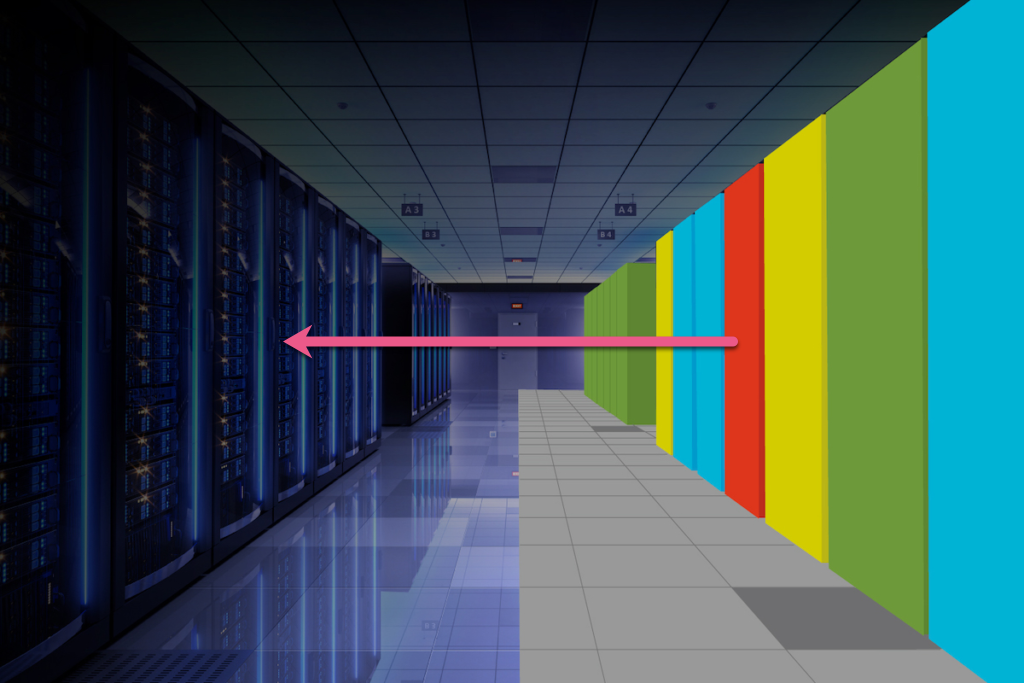
The path to revenue seems evident for companies that will make Metaverse headsets or sell content. Most of that will target “the end user,” the people who buy mobile devices, watches, tablets, and other e-gear. No doubt “bazillions” of dollars will be spent.
But the corporate market will have huge potential as well. Not that everyone will someday be sitting back in office cubes, then with a headset on all day. That doesn’t make sense. But the one part of the corporate world where metaverse concepts make immediate sense will be in the IT department.
Specifically, I’m talking about the ability to quickly ascertain the overall health of IT components. Servers, switches, storage arrays, software applications, etc. All the computer hardware, application software, and networking “stuff” that runs a business.
Dashboards are commonly used throughout IT today. But the problem is too many dashboards. Hardware, software, applications, networking, cloud, business analytics, every silo seems to have its own dashboard with dials, tiles, gauges, and graphs. Pages of emails and alerts are created, which must be examined to determine what is noise versus what is a real problem.
Conceptually, I like this picture: “The Digital Twin.”

Pretend the fourth server rack on the right that is colored “RED” has its digital twin with the “real” server rack, which is the fourth server on the left. In theory, if you made changes to the server configuration of the “digital twin,” it would also make the change on the real server. The two would always be in sync.
What’s the big deal?
Imagine you are standing in the middle of an NBA basketball court. You can clearly see every seat in the arena. Every seat is filled with fans, but almost everyone wears “green.” In each section, there are one or two people wearing “red.” Can you clearly see them? Most likely, they will stand out.
What if I were standing in a “virtual datacenter,” maybe in an elevated viewing position, so the virtual model I’m seeing in my VR headset allows me to see all of the servers, cabinets, etc. All of the virtual twins representing real servers in the real world are colored “Green.” Only one is colored “Red,” like in the picture above and below. Which server do you think needs my attention?

Here is the rub. In that one hardware cabinet that is colored “Red,” there might be a variety of computer components from several vendors. Server blades, storage drives, network gear, etc. All from multiple vendors.
That’s where “metaverseapi.com” (meta verse API) comes in. There needs to be a way for IT-associated componentry (server, frames, network, associated hardware, and software) to have a standard way to “communicate” back into the metaverse experience to which the user is connected. So maybe in my “Red” twin server, a variety of things might be happening that would cause it to turn red and need my attention:
- Maybe the temperature inside the server has exceeded a threshold.
- Maybe a server in that cabinet is running out of assigned disk space.
- Maybe a license has expired in a piece of software.
- Maybe a network interface is dropping packets past an assigned error threshold.
- Maybe the operating system on a server in that cabinet has detected an active security threat.
- and hundreds more “maybes.”
The point is that various failures might be happening within the context of that single server frame. The technology that makes up that frame comes from dozens of different IT vendors. Each vendor will claim to have a “dashboard,” but then you have to monitor multiple dashboards, each with its own way of reporting errors, setting alarms, etc. Different silo groups within a typical IT organization will own their part of the entire IT landscape, but how do you get that single view of everything? If I were a database administrator looking at the metaverse “digital twin” of my IT organization, I certainly would be interested in all of the “maybe” conditions listed above.
There are “metaverse standards” groups forming, but there are many contexts within the overall metaverse concept. In this article, I’m just exploring the idea of how to use the digital twin concept to help manage complex IT architectures. What about payment standards, graphics rendering, profile propagation, etc.? If multiple metaverses can connect to each other, how will a user transition from one to the other?
In the realm of IT infrastructure monitoring and management, I’m thinking of something “like” SNMP, but not restricted to just networking components. What is needed is some standard way of sharing information about the entire technology stack that makes up an environment. Then be able to filter that and present it inside a metaverse experience. Then depending upon your job role, you’ll see “green,” “yellow,” and “red” in a context that matches your organizational skills.
For example, I wrote about the metaverse experience of a corporate IT problem solver. It describes how they would enter the metaverse and interact with the digital twins of real IT infrastructure. It is a teaser article, but I believe it gets the point across. It is here.
I was not able to register “metaverseapi.com,” but I was able to register “digitaltwinapi.com” (digital twin API).